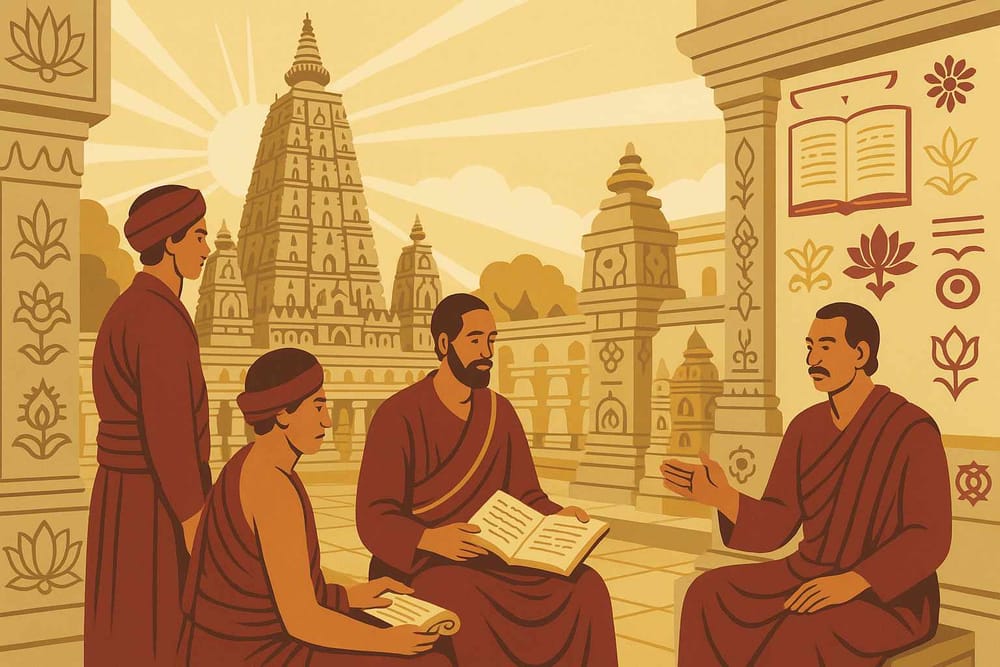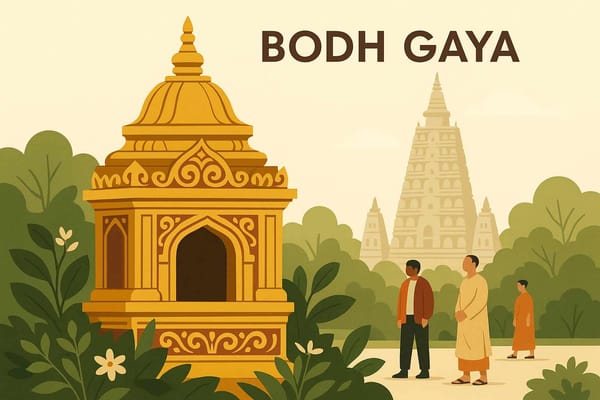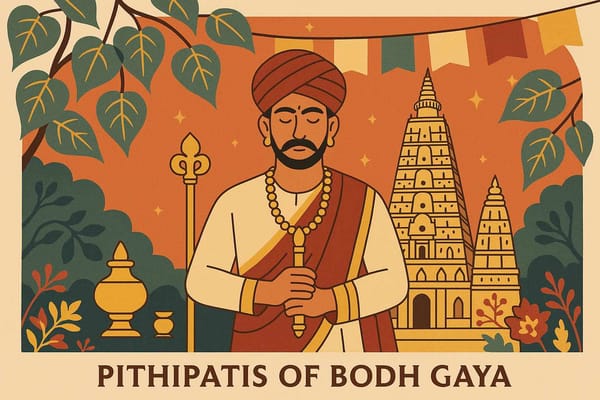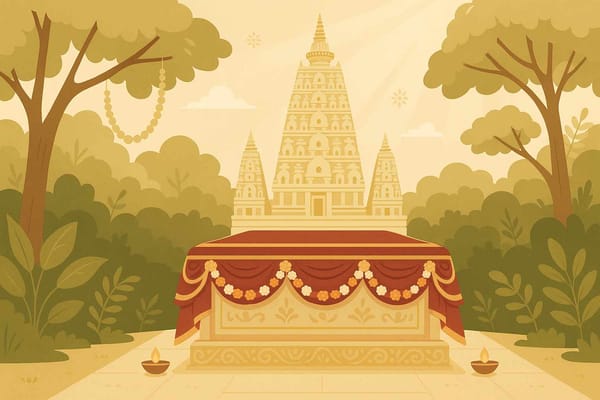
Exploring the Historical Significance of the Pithipatis of Bodh Gaya: A 2025 Analysis
Have you ever stood on sacred ground and felt the weight of centuries settle upon you? In Bodh Gaya, under the gentle shade of the Bodhi Tree, this feeling is profound. It’s the place where a prince became the Buddha, where enlightenment itself touched the earth. We all know this story. But have you ever wondered, who protected this sacred flame through the storms of time? Who were the silent sentinels who ensured that this beacon of peace would continue to shine for generations like us?
The answer lies with a group of remarkable rulers, often just a footnote in our history books: the Pithipatis of Bodh Gaya. Their story is not just history; it’s a lesson in devotion, duty, and the preservation of dharma.
Who Exactly Were the Pithipatis?
The name itself, "Pithipati," holds the key. It comes from the Sanskrit word ‘Pīṭhī’, referring to the most sacred spot of all – the Vajrasana, or the Diamond Throne, where Lord Buddha attained enlightenment. The Pithipatis were, quite literally, the "Lords of the Throne."
Emerging between the 11th and 13th centuries, during the time of the great Pala Empire, they weren't just kings in the traditional sense. Many rose from the ranks of *Acaryas* (teachers) and religious authorities. They held titles like *magadhādipati* (ruler of Magadha), but their true power came from their sacred responsibility. They were the hereditary guardians of Bodh Gaya, balancing the complex duties of administration with the profound responsibility of spiritual custodianship.
A Legacy of Faith and Governance
Being a Pithipati was a delicate balancing act. On one hand, they were feudal lords managing land and revenue. On the other, they were the chief patrons of the most important site in the Buddhist world. Their success lay in beautifully merging these two roles.
Guardians of the Dharma
Their most crucial role was protecting the Mahabodhi Temple. In an era marked by political shifts and the looming threat of invasions, the Pithipatis stood as a shield. They funded repairs, supported the monastic community, and ensured that the timeless rituals continued uninterrupted. Historical inscriptions tell us beautiful stories of their patronage. For instance, Acarya Buddhasena, a prominent Pithipati, made generous land grants to the Singhalasangha—monks from distant Sri Lanka—to build and maintain a monastery right here in Bodh Gaya. This wasn't just a political alliance; it was an act of pure faith, a way of keeping the global Buddhist family connected.
Building a Thriving Spiritual Ecosystem
Under their watchful eye, Bodh Gaya became more than just a pilgrimage site; it transformed into a vibrant spiritual and cultural hub. They understood that for faith to flourish, the community around it must also prosper. They encouraged trade, supported artisans, and created an environment where scholars and pilgrims from across Asia could gather, exchange knowledge, and seek spiritual solace. This dedication to preserving a sacred space is a spirit we see across our incredible country. This same spirit of preservation is alive in places like the timeless historical sites of Udaipur, where every stone tells a story of faith and history intertwined.
The Turning of the Tide
Like all great dynasties, the influence of the Pithipatis eventually waned. The region faced relentless raids from Turkic invaders, to whom they were tragically forced to submit. Later, political landscapes shifted, and their authority faded into the pages of history. But did their legacy disappear? Not at all.
The legacy of the Pithipatis is etched into the very soul of Bodh Gaya. It lives in the resilience of the Mahabodhi Temple and in the unbroken chain of devotion that continues to this day. Recent archaeological studies have even hinted at their architectural footprint, revealing evidence of a large monastery complex buried near the temple, a silent testament to their grand vision.
These stories of unwavering faith and dedication are the treasures of our heritage. It is these timeless tales of devotion and duty that we, at Bhaktilipi, are passionate about preserving and sharing. We believe that by understanding our past, we can enrich our present spiritual journey.
Understanding the Pithipatis and Their Enduring Importance
Many people often wonder what the term ‘Pithipati’ actually meant in Bodh Gaya’s history. As we've seen, they were the revered custodians of this sacred site, playing a pivotal role in maintaining its spiritual and cultural heritage for centuries. Their primary responsibility was managing the Mahabodhi Temple, overseeing its rituals, and ensuring that Buddhist traditions were preserved with utmost sanctity.
Their influence was immense, shaping Bodh Gaya into the global spiritual centre it is today. While their main focus was on Buddhist practices, their administrative skills also contributed to the broader social fabric of the region. They faced immense challenges, from political turmoil to the threat of invasions, yet historical texts and inscriptions stand as a testament to their invaluable contributions. Their deep connection to the Mahabodhi Temple wasn't just administrative; it was a sacred trust. This is why the legacy of the Pithipatis is so important even today—it reminds us of the profound duty we have to preserve our sacred heritage and honor the traditions they protected so fiercely.
At Bhaktilipi.in, we are your companions on this journey of discovery and devotion. We are a digital space dedicated to sharing timeless devotional literature, sacred texts, and inspiring stories that resonate with modern life while being deeply rooted in tradition.
Stay connected with us for more such deep dives into our spiritual heritage. Subscribe to our newsletter and follow us on Facebook, Instagram, and YouTube for regular updates on devotional wisdom and rituals.
A passionate group of people dedicated to preserving India's knowledge of Dharma, Karma, and Bhakti for ourselves and the world 🙏.
Related in

The Forgotten Legacy: Pithipatis of Bodh Gaya - A 2025 Analysis
Have you ever stood in a place so drenched in history that the very air seems to hum with ancient stories? Bodh Gaya is one such place. It’s where the world shifted, where a prince became the Buddha. But beyond this monumental event, there are countless untold stories embedded

Pithipatis of Bodh Gaya: Guardians and Legacy Explored
Have you ever stood in a place so drenched in history that you could almost feel the echoes of the past? Bodh Gaya is one such place. Just standing near the sacred Bodhi tree, you can feel a deep sense of peace, a connection to something ancient and profound. It’

Pithipatis of Bodh Gaya- History and Significance Explored
There are some places on Earth that feel timeless, don't they? Bodh Gaya is one of them. The moment you step onto its sacred soil, a profound sense of peace washes over you. It’s here, under the shade of the Bodhi tree, that a young prince found
